Du möchtest mit dem Rollschuhlaufen anfangen, weißt aber nicht, wo du starten sollst? Hier ist der Deal: Quad Skates sind deine beste Wahl, wenn du neu im Skaten bist. Sie sind stabil, leicht auszubalancieren und verfügen über ein einfach zu bedienendes Bremssystem. Inline Skates sind dagegen schneller, aber für Anfänger schwieriger zu meistern.
Das musst du wissen:
- Quad Skates: Perfekt für Anfänger dank ihrer breiten, stabilen Basis und dem Zehenstopp-Bremssystem.
- Inline Skates: Besser für Geschwindigkeit und lange Strecken, erfordern aber mehr Gleichgewicht und Koordination.
- Wichtige Merkmale, auf die du achten solltest: Bequeme Passform, Knöchelstütze und zuverlässige Bremsen.
- Sicherheit zuerst: Verzichte nicht auf Helm, Knieschützer und Handgelenkschoner.
Beginne mit Quad Skates, um Selbstvertrauen aufzubauen, und steige dann auf Inline Skates um, wenn du bereit für eine Herausforderung bist. Egal, ob du im Park cruisest oder in deiner Einfahrt übst, Rollschuhlaufen macht Spaß, ist erschwinglich und leicht zu erlernen. Lass uns losrollen! :)
Der Rollschuh-Käuferleitfaden – Worauf du achten solltest, wie du deine Füße misst und was du UNBEDINGT vermeiden musst!
Arten von Rollschuhen: Welche sind am besten für Anfänger geeignet?
Wenn du dein erstes Paar Rollschuhe kaufst, wirst du schnell feststellen, dass es zwei Haupttypen gibt: Quad Skates und Inline Skates. Der entscheidende Unterschied liegt in der Anordnung der Räder, was direkt deine Stabilität und Benutzerfreundlichkeit beeinflusst.
Quad Skates haben vier Räder, die in einem quadratischen Muster angeordnet sind – zwei vorne und zwei hinten. Inline Skates hingegen stapeln alle ihre Räder in einer geraden Linie, ähnlich wie Schlittschuhe. Diese Rad-Anordnung beeinflusst alles, von deinem Stabilitätsgefühl bis hin zum Bremsen. Lass uns erklären, warum Quad Skates ideal für Anfänger sind und wie sie im Vergleich zu Inline Skates abschneiden.
Quad Skates: Die anfängerfreundliche Option
Quad Skates sind ohne Zweifel die beste Wahl für neue Skater. Ihr Design verschafft dir einen natürlichen Vorteil, wenn du gerade erst anfängst und das Balancieren lernst.
Die quadratische Anordnung der Räder schafft eine breite, stabile Basis – ähnlich wie auf einer stabilen Plattform zu stehen statt auf einem Drahtseil. Diese zusätzliche Stabilität erleichtert es dir, deinen Stand zu finden und dich sicher zu fühlen, während du rollst.
Das Anhalten ist mit Quad Skates ebenfalls einfacher. Sie haben Zehenstopper, mit denen du durch sanftes Verlagern deines Gewichts nach vorne bremsen kannst. Diese Bewegung fühlt sich intuitiv an und ist für Anfänger leicht zu erlernen, im Gegensatz zum Fersenbremssystem bei Inline Skates, das schwieriger zu meistern sein kann.
Achte bei Quad Skates auf die kürzere Radbasis, die es leichter macht, nach hinten zu kippen, wenn du die Knie zu sehr durchstreckst oder dein Gewicht zu weit nach hinten verlagerst. Die Lösung? Halte deine Knie gebeugt und dein Gewicht zentriert. Diese "Bereitschaftsposition" mit parallel stehenden Füßen und etwa einer Handbreit Abstand ist deine Standardhaltung, um ausgeglichen und bequem zu bleiben.
Vergiss auch nicht, deine Quad Skates fest zu schnüren. Ein sicherer Sitz hilft dir, dich kontrollierter zu fühlen, was entscheidend ist, um Selbstvertrauen aufzubauen.
Inline Skates: Eine steilere Lernkurve
Während Inline Skates für Anfänger funktionieren können, erfordern sie von Anfang an mehr Gleichgewicht und Koordination. Ihre schmale Radbasis bedeutet, dass deine Rumpf- und Fußgelenkmuskulatur härter arbeiten muss, um dich stabil zu halten, was für Erstskater ermüdend und sogar frustrierend sein kann.
Das Bremsen auf Inline Skates ist eine weitere Herausforderung. Sie verwenden eine Fersenbremse, die mehr Koordination und Übung erfordert, um sie effektiv zu nutzen und dabei das Gleichgewicht zu halten. Für Anfänger kann sich das im Vergleich zu den Zehenstoppern bei Quad Skates unbeholfen und weniger natürlich anfühlen.
Das heißt aber nicht, dass Inline Skates keine Vorteile haben. Sie sind schneller, besser geeignet für lange Strecken, und ihre größeren Rollen bewältigen rauere Oberflächen leichter. Für jemanden, der ganz neu im Skaten ist, überwiegen diese Vorteile jedoch meist nicht die anfänglichen Schwierigkeiten.
Also, wie lautet das Urteil? Beide Skatetyen bringen dich in Bewegung, aber Quad Skates sind der bessere Einstieg. Ihre Stabilität, das einfach zu bedienende Bremssystem und das verzeihende Design machen sie perfekt, um Vertrauen bei den ersten wackeligen Sessions aufzubauen. Und wenn du den Dreh raus hast, kannst du immer noch Inline Skates ausprobieren, um deine Skating-Fähigkeiten zu erweitern.
Wichtige Merkmale, auf die du bei Anfänger-Rollschuhen achten solltest
Bei der Wahl von Quad Skates geht es darum, Merkmale zu finden, die das Skaten für Anfänger einfacher, komfortabler und sicherer machen. Lass uns das aufschlüsseln.
Komfort und Passform
Die richtige Passform zu finden, ist ein echter Game-Changer. Zu enge Skates können deine Füße schmerzen lassen, während zu lockere dein Gleichgewicht stören. Deshalb sind Anfänger-Skates oft mit gepolsterten Innenschuhen und gedämpften Einlegesohlen ausgestattet, die sich direkt aus der Box großartig anfühlen. Achte auf Schuhe aus weichen Materialien oder Memory-Schaum, der sich deinen Füßen anpasst und Ermüdung bei längeren Sessions reduziert. Einige höherwertige Modelle lassen sich sogar zu Hause wärmeverformen, um eine perfekte, individuelle Passform zu erzielen.
"Unsere Skates sind so konzipiert, dass sie der natürlichen Form deines Fußes entsprechen und unvergleichlichen Komfort und Unterstützung bieten." – Bont Skates Online Shop
Eine geräumige Zehenbox kann eingeklemmte Zehen verhindern, während gute Belüftung deine Füße kühl und schweißfrei hält. Beim Anprobieren der Skates solltest du dünne Socken tragen und die Schnürsenkel so anpassen, dass sie sicher sitzen, ohne einzuengen. Merkmale wie Klettverschlüsse oder Ratschenverschlüsse machen das Verstellen schnell und einfach. Für Kinder sind verstellbare Größenmechanismen ein Bonus – sie lassen die Skates mit den Füßen mitwachsen und ersparen ständige Neuanschaffungen.
"Die Skates sind leicht verstellbar – bequem – und passen perfekt zu ihr." – Jon Hansen, Kunde
Wenn du die Passform gemeistert hast, ist der nächste Schritt, für Stabilität zu sorgen, damit die Fahrt geschmeidig wird.
Stabilität und Unterstützung
Das Lernen des Skatens fällt viel leichter, wenn du dich auf deinen Füßen sicher fühlst. Eine hohe Knöchelstütze ist hier der Schlüssel – sie hilft, Umknicken zu verhindern und gibt dir das Selbstvertrauen, weiterzumachen. Achte auf Schuhe, die deinen Knöchel sicher umschließen.
Die Rollen spielen ebenfalls eine große Rolle für die Stabilität. Breitere Rollen bieten eine stabilere Basis, während weichere kleine Unebenheiten absorbieren und deine Fahrt sanfter machen. Ein niedrigerer Schwerpunkt – bei dem der Schuh näher am Boden sitzt – kann dir ebenfalls helfen, dich beim Lernen ausgeglichener zu fühlen. Materialien wie Memory-Schaum und Wildleder können Ermüdung reduzieren, während Schnürstabilisatoren den Druck gleichmäßig verteilen und so den Komfort erhöhen.
Bremssystem
Sobald Komfort und Balance stimmen, kommt die Sicherheit als nächstes. Ein gutes Bremssystem ist ein Muss für Anfänger.
Bei Quad Skates sind Zehenstopper deine bevorzugten Bremsen. Sie sind einfach zu bedienen und perfekt für Anfänger. Du findest zwei Haupttypen: feste (Bullauge) Zehenstopper und verstellbare. Verstellbare Stopper sind eine solide Wahl, wenn du mit der Zeit mehr Kontrolle möchtest.
Das Material der Zehenstopper ist ebenfalls wichtig. Gummi- oder Urethanstopper bieten besseren Halt und dämpfen den Druck sanfter, was sowohl für die Sicherheit als auch zum Vermeiden von zerkratzten Böden großartig ist. Harte Kunststoffstopper hingegen sind nicht so nachgiebig.
Die Verwendung von Zehenstoppern ist einfach – verlagere dein Gewicht nach vorne, bis der Stopper den Boden berührt. Es ist eine natürliche Bewegung, die dir hilft, deine Geschwindigkeit zu kontrollieren und beim Üben Selbstvertrauen aufzubauen.
sbb-itb-17ade95
Sicherheitstipps für Skater, die zum ersten Mal unterwegs sind
Skaten zu lernen macht Spaß, aber sicher zu bleiben beginnt damit, sich auf die richtige Technik zu konzentrieren.
Wie man sicher Skaten lernt
Fang mit den Grundlagen an: Finde dein Gleichgewicht und nimm eine stabile Haltung ein. Halte deine Körperhaltung aufrecht, beuge leicht die Knie und senke deinen Körperschwerpunkt – das macht es einfacher, stabil zu bleiben.
Spanne deine Rumpfmuskulatur an, indem du deinen Bauchnabel zur Wirbelsäule ziehst. Dieser Trick gibt dir extra Halt, besonders beim Drehen oder auf unebenem Untergrund. Sieh es als deine Geheimwaffe, um aufrecht zu bleiben.
Übe kleine Gewichtsverlagerungen von einem Fuß auf den anderen. Sobald du dich sicher fühlst, vergrößere allmählich den Bewegungsradius, um dich mit dem Gleiten vertraut zu machen. Balance ist die Grundlage, aber sicher zu stoppen ist genauso wichtig.
Lerne sofort, wie du stoppst. Für Anfänger ist der T-Stopp eine solide Wahl: Stelle einen Fuß quer zum anderen und ziehe die Rollen des hinteren Fußes sanft über den Boden, um langsamer zu werden. Eine weitere gute Option ist der Pflugstopp – drehe deine Zehen nach innen, beuge die Knie und drücke die Füße auseinander, um eine Keilform zu bilden. So kommst du allmählich zum Stillstand.
Wenn du die Grundlagen beherrschst, nimm dir Zeit und übe regelmäßig. Kurze, fokussierte Einheiten in deinem Wohlfühltempo helfen dir, Selbstvertrauen aufzubauen und deine Fähigkeiten mit der Zeit zu verbessern.
Top Anfänger-Rollschuhe: Unsere Empfehlungen
Wenn du gerade erst anfängst, möchtest du Skates, die sich stabil, bequem und einfach zu bedienen anfühlen. Hier ist ein kurzer Leitfaden, der dir hilft, das richtige Paar zu finden.
Beste Quad-Skates für Anfänger
Quad-Skates sind eine klassische Wahl, besonders für Anfänger. Sie haben eine breite Radbasis, die dein Gewicht gleichmäßig verteilt und das Balancieren erleichtert. Außerdem bietet der hohe Schaft festen Knöchelschutz, während die verstellbaren Zehenstopper zuverlässiges Bremsen ermöglichen. Innen findest du meist gepolsterte Einlagen, die deine Füße auch bei längeren Skatesessions bequem halten.
Beste Inline-Skates für Anfänger
Wenn Geschwindigkeit und Beweglichkeit eher dein Stil sind, sind Inline-Skates eine tolle Wahl. Sie sind mit glatten, langlebigen Rollen und einem niedrigeren Schaft für mehr Knöchelbeweglichkeit konzipiert. Die meisten Modelle verfügen außerdem über ein Fersenbremssystem, das besonders für Anfänger super praktisch ist. Einige haben sogar verstellbare Größen, sodass sie mit dir mitwachsen – oder dir einfach eine perfekte Passform bieten. Für etwas ganz anderes schau dir an, wie Snowfeet* einen einzigartigen Dreh in anfängerfreundliche Designs bringt.
Warum Snowfeet* Produkte eine Überlegung wert sind
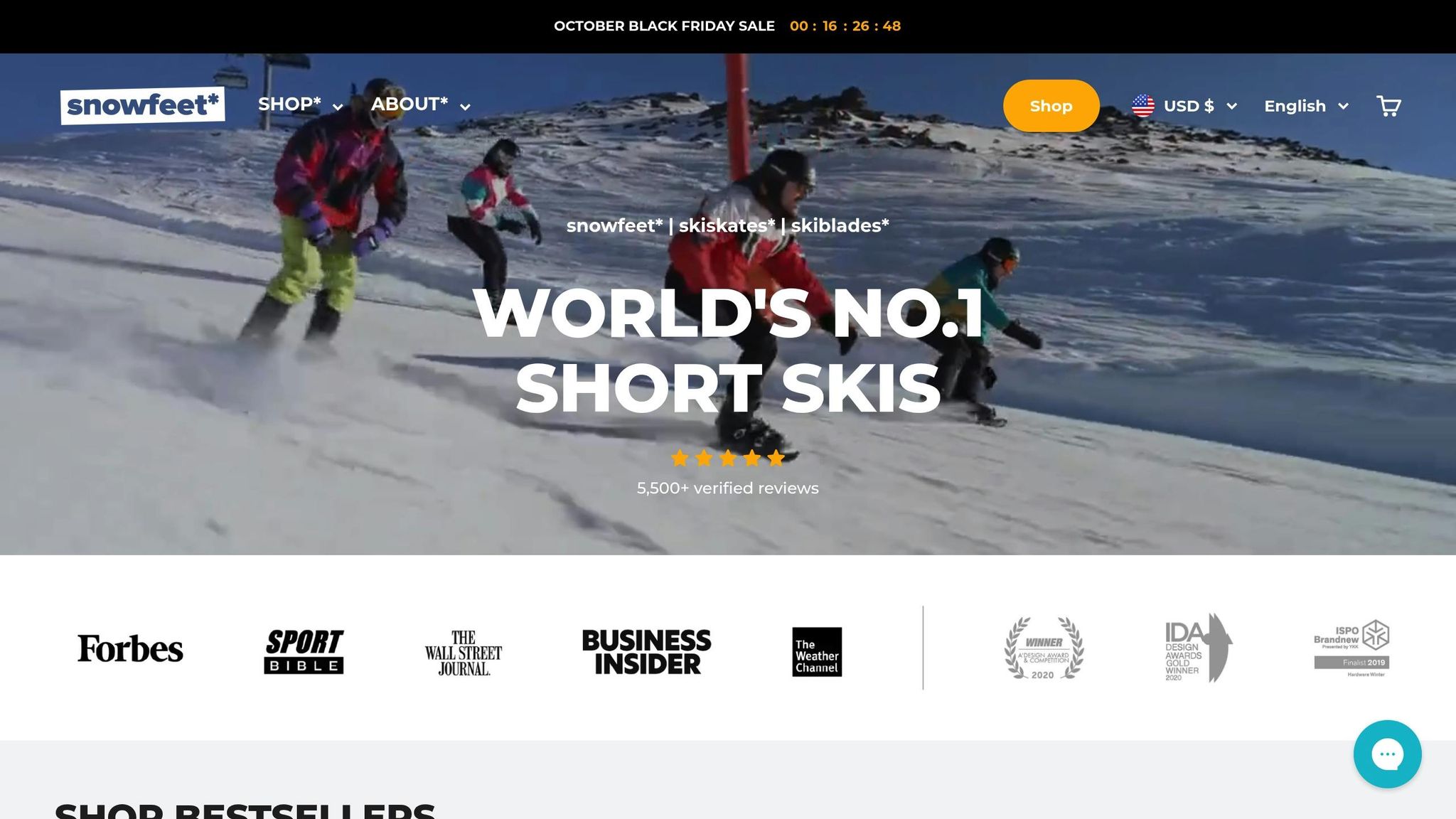
Snowfeet* sorgt mit Ausrüstung, die einfach zu benutzen ist und mit cleveren Designmerkmalen vollgepackt ist, für frischen Wind. Basierend auf ihrer Expertise im Wintersport haben sie Produkte entwickelt, die das Lernen schnell und einfach machen – einige Nutzer berichten, dass sie es in nur 5 Minuten draufhaben.
Was Snowfeet* wirklich auszeichnet, ist ihr Fokus auf Portabilität. Ihre Ausrüstung ist kompakt genug, um in einen Rucksack zu passen, sodass du sie überallhin problemlos mitnehmen kannst. Und obwohl sie klein sind, verzichten sie nicht auf Leistung. Die Bewegung fühlt sich ähnlich wie beim Inline-Skaten an, was sie zu einer großartigen Option für Cross-Training oder ganzjährige Aktivität macht.
Die Preise beginnen bei 150 $, mit Mittelklasseoptionen von 230 $ bis 290 $. Snowfeet* stellt die Vorstellung infrage, dass Anfängerausrüstung klobig oder langweilig sein muss. Stattdessen bieten sie eine schlanke, moderne Lösung für Skater, die über die Bahn hinaus erkunden wollen. Egal, ob du auf Mehrjahresabenteuer stehst oder einfach etwas suchst, das leicht zu lernen ist, Snowfeet* liefert einen frischen Ansatz fürs Anfänger-Skaten.
Fazit: Starte deine Skating-Reise mit Selbstvertrauen
Bereit, die Schnürsenkel zu binden und loszulegen? Lass uns die wichtigsten Punkte zusammenfassen, damit du deine Skating-Abenteuer mit Leichtigkeit starten kannst.
Wichtige Punkte Zusammenfassung
Zuerst das Wichtigste: Wähle Skates, die Komfort, Stabilität und Sicherheit priorisieren. Für Anfänger sind Quad Skates eine solide Wahl. Sie bieten eine breitere Radbasis und ein zuverlässiges Zehenstopp-Bremssystem, was sie leichter handhabbar macht. Andererseits sind Inline Skates perfekt, wenn du Geschwindigkeit und Wendigkeit suchst – obwohl sie etwas mehr Übung zum Meistern benötigen.
Achte auf Skates mit diesen unverzichtbaren Eigenschaften:
- Ein enger, sicherer Sitz mit angemessener Knöchelstütze.
- Gepolsterte Polsterung für ganztägigen Komfort.
- Ein zuverlässiges Bremssystem, das dir hilft, sicher anzuhalten.
Und vergiss deine Schutzausrüstung nicht! Ein Helm, Knieschützer und Handgelenkschoner sind nicht nur Accessoires – sie sind dein Sicherheitsnetz, das dir erlaubt, dich aufs Lernen zu konzentrieren, ohne Angst vor Stürzen zu haben. Sich sicher in der Ausrüstung zu fühlen bedeutet auch bessere Kontrolle und Reaktionsfähigkeit, wenn du auf der Bahn oder Strecke unterwegs bist.
Starte mit der richtigen Einstellung
Sobald du deine Ausrüstung hast, ist es Zeit, an deinem Selbstvertrauen zu arbeiten. Fang klein an. Finde einen sicheren, flachen Bereich – wie eine Rollschuhbahn oder einen glatten Gehweg – wo du die Grundlagen ohne Ablenkung üben kannst. Mach Fortschritte in deinem eigenen Tempo. Es ist kein Wettlauf, also wenn du eine Pause brauchst und dich neu sammeln möchtest, ist das völlig in Ordnung. Für zusätzliche Unterstützung können Anfängerkurse im Skaten dir Techniken in einer entspannten, ermutigenden Umgebung beibringen.
Wähle schließlich die Skates, die zu deinem Stil und deinen Zielen passen. Wenn du etwas ein bisschen anderes möchtest, schau dir Snowfeet* an. Diese Skates verbinden Elemente des Skifahrens und Snowboardens und bieten fantastischen Halt und Kontrolle. Inspiriert von High-Performance-Ski- und Snowboardmarken sind sie eine großartige Option für Anfänger, die ein sanftes und spaßiges Lernerlebnis suchen.
Also schnapp dir deine Skates, zieh deine Ausrüstung an und leg los – deine Skatereise hat gerade erst begonnen! 😊
FAQs
Was ist der Unterschied zwischen Quad Skates und Inline Skates für Anfänger?
Für diejenigen, die gerade erst anfangen, sind Quad Skates meist die erste Wahl. Warum? Ihre breitere Radbasis bietet dir bessere Stabilität und Balance, was es einfacher macht, aufrecht zu bleiben. Außerdem haben sie einen praktischen Zehenstopp, der das Anhalten viel natürlicher macht. Wenn du neu im Skaten bist, bieten Quad Skates eine sanftere Lernkurve und sind leichter zu kontrollieren.
Jetzt sind Inline Skates eine etwas andere Geschichte. Sie haben eine einzelne Reihe von Rollen, was bedeutet, dass du von Anfang an mehr Gleichgewicht und Kontrolle brauchst. Während sie dir später helfen können, höhere Geschwindigkeiten zu erreichen und schärfere Moves zu machen, können sie sich anfangs etwas wackelig anfühlen. Für die meisten Anfänger sind Quad Skates einfach der bessere Startpunkt.
Worauf sollte ich achten, um die beste Passform und den besten Komfort bei der Wahl von Rollschuhen für Anfänger zu gewährleisten?
Beim Aussuchen deines ersten Paares Rollschuhe ist die Passform alles. Die Skates sollten sich eng anfühlen, aber nicht zu fest. Deine Zehen sollten sich ein wenig bewegen können, aber dein Fuß darf nicht im Schuh hin- und herrutschen. Eine richtige Passform gibt dir bessere Kontrolle und Stabilität – zwei Dinge, die jeder Anfänger braucht.
Achte auf Merkmale wie gepolsterte Innenschuhe, die zusätzlichen Komfort bieten, und verstellbare Größenoptionen, falls du dir bei deiner Größe unsicher bist. Und hier ein Profi-Tipp: Probiere die Skates mit denselben Socken an, die du beim Skaten tragen möchtest. Dieser kleine Schritt kann einen großen Unterschied machen, um die perfekte Passform zu finden. Komfort und Halt sind der Schlüssel, damit dein erstes Skaterlebnis Spaß macht und frustfrei bleibt!
Welche Sicherheitsausrüstung brauchen Anfänger beim Rollschuhlaufen und warum ist sie wichtig?
Für alle, die zum ersten Mal auf Skates stehen, ist Sicherheitsausrüstung ein Muss. Dazu gehören ein Helm, Handgelenkschützer, Knieschützer und Ellbogenschützer. Warum? Denn seien wir ehrlich, Stürze gehören zur Lernkurve dazu. Diese Ausrüstung schützt dich vor Schürfwunden, Prellungen und potenziell ernsten Verletzungen.
Die richtige Ausrüstung zu tragen bedeutet nicht nur Schutz – sie stärkt auch dein Selbstvertrauen. Wenn du dich sicher fühlst, fällt es dir leichter, dich auf das Finden deines Gleichgewichts, das Verbessern deiner Bewegungen und vor allem auf den Spaß zu konzentrieren. Mit Sicherheit im Hinterkopf zu starten, macht dein erstes Skaterlebnis reibungsloser und viel angenehmer!







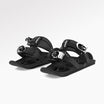













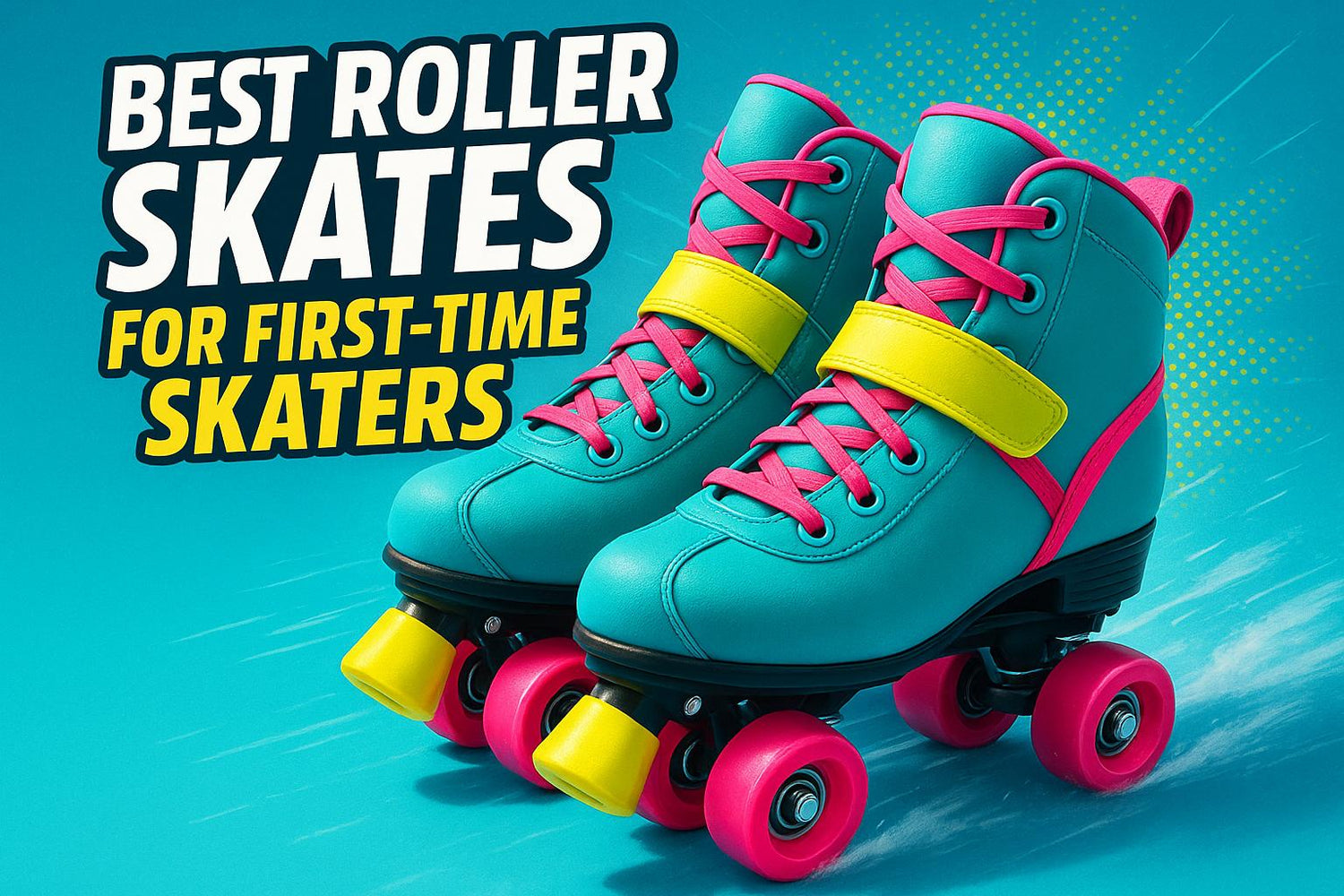
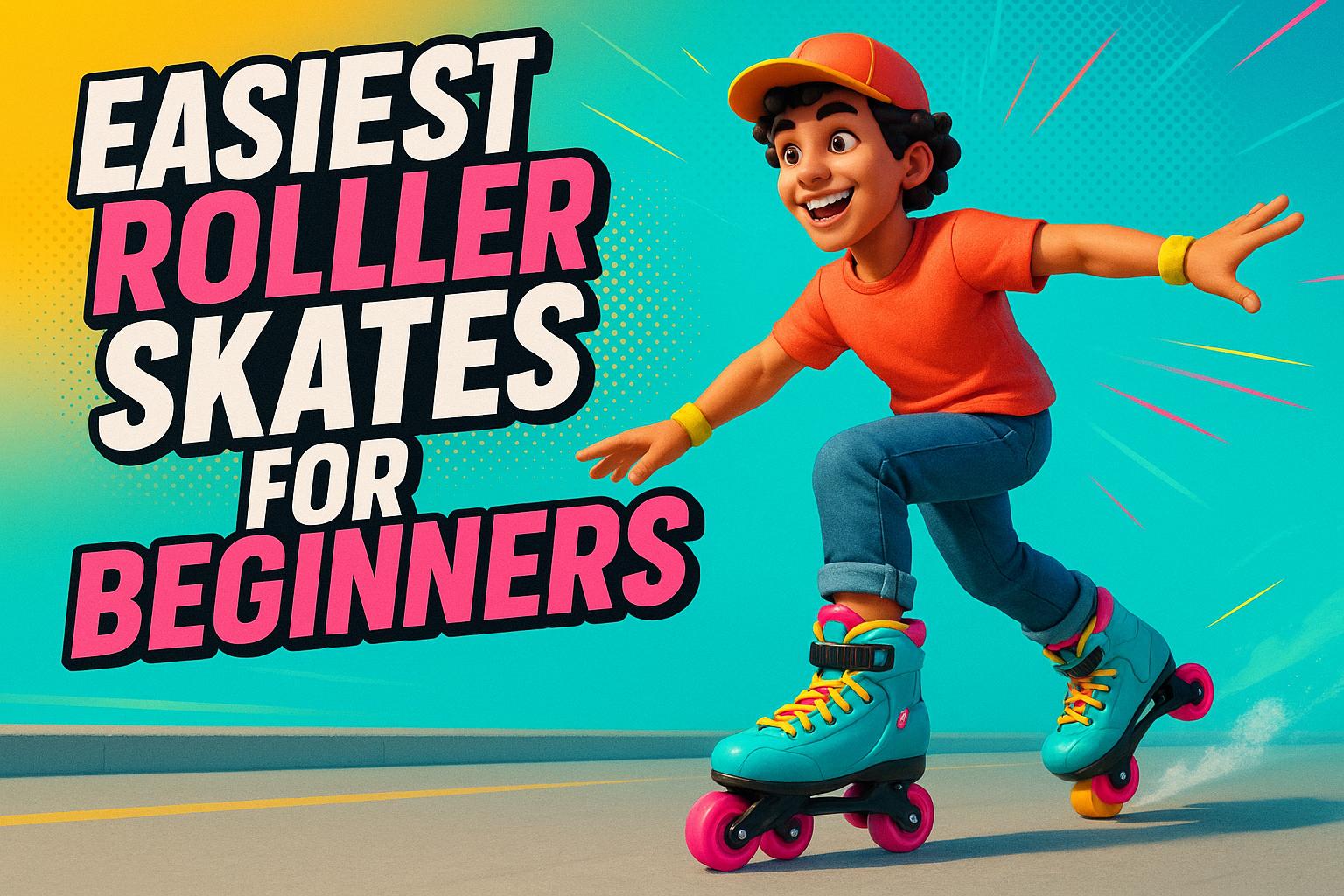
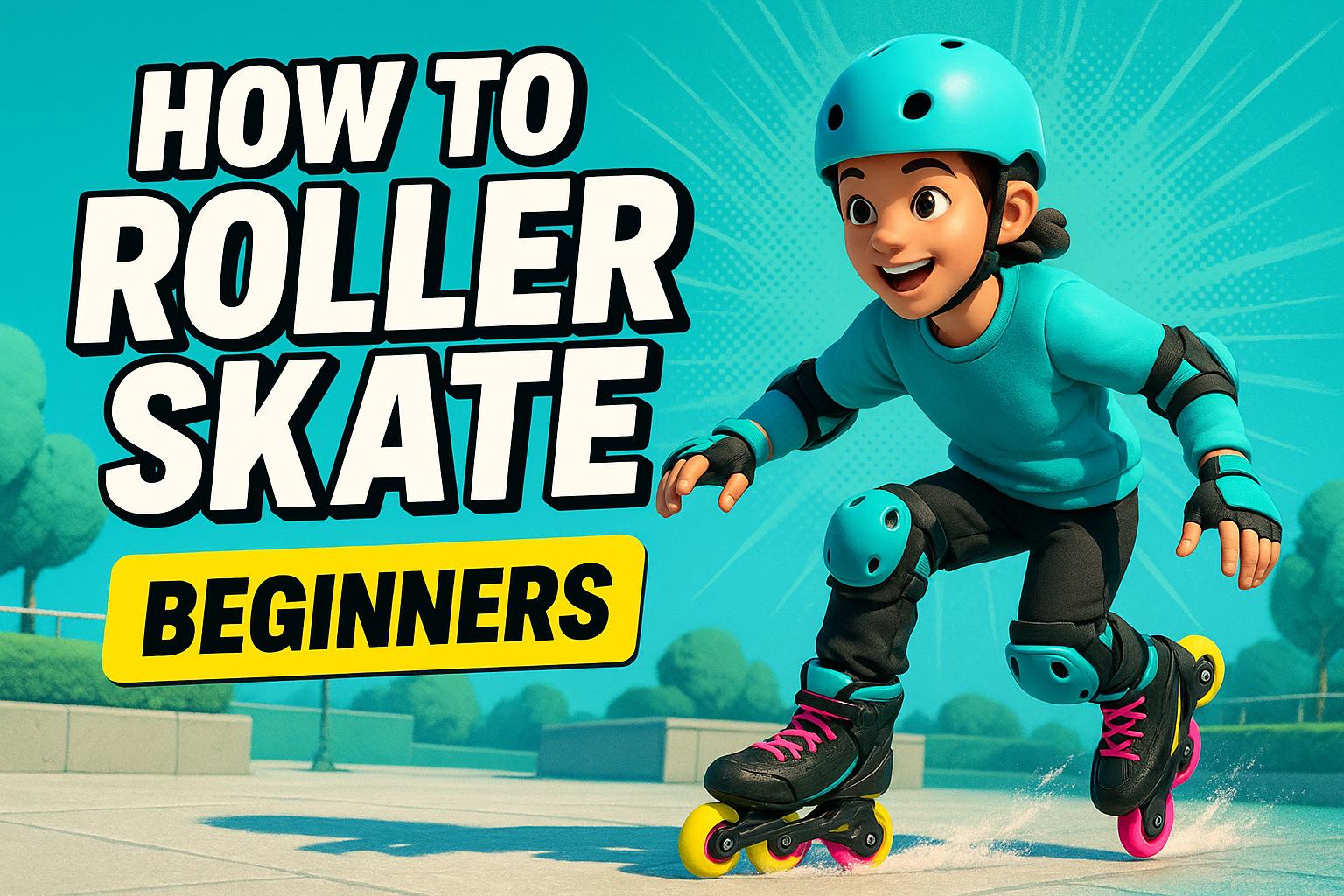




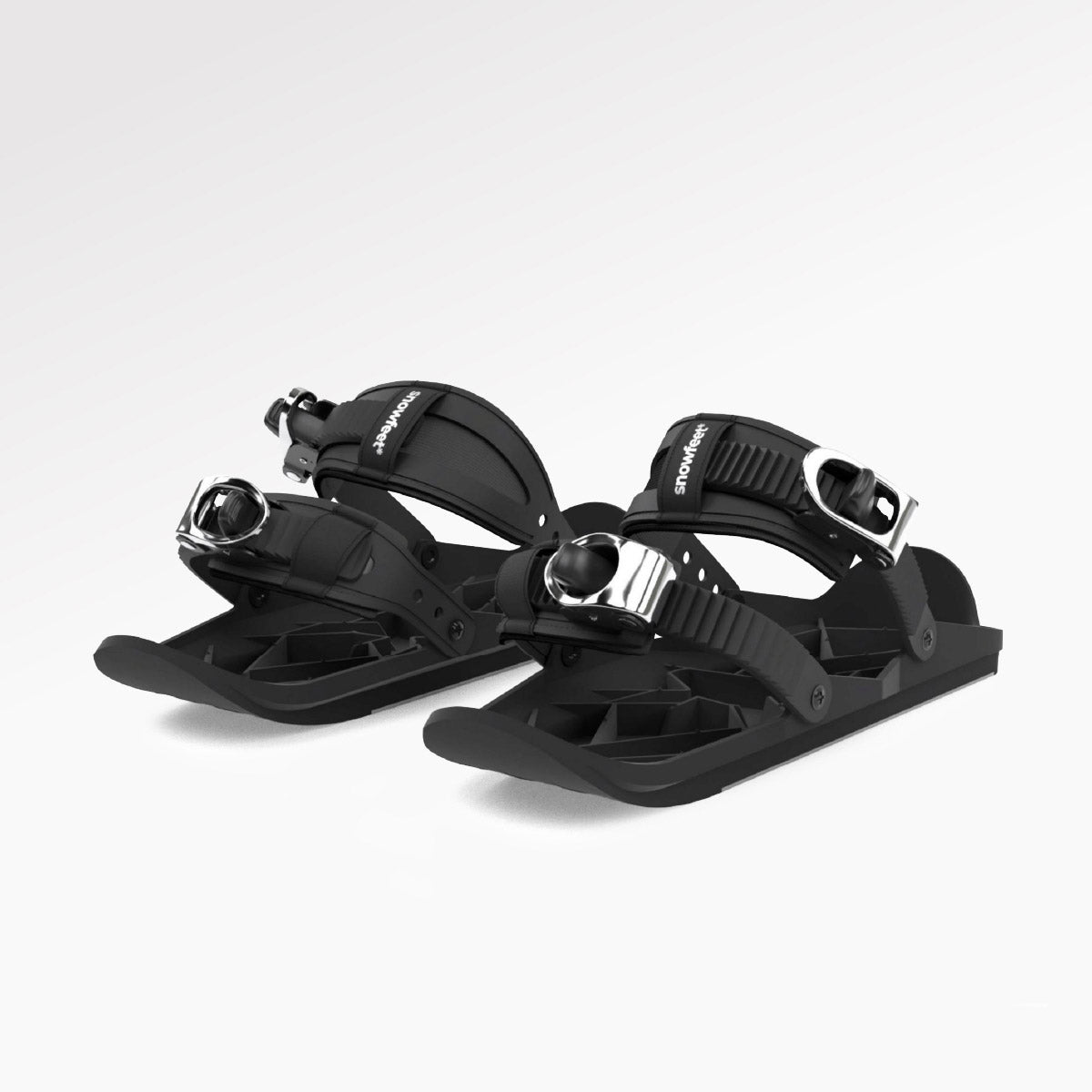
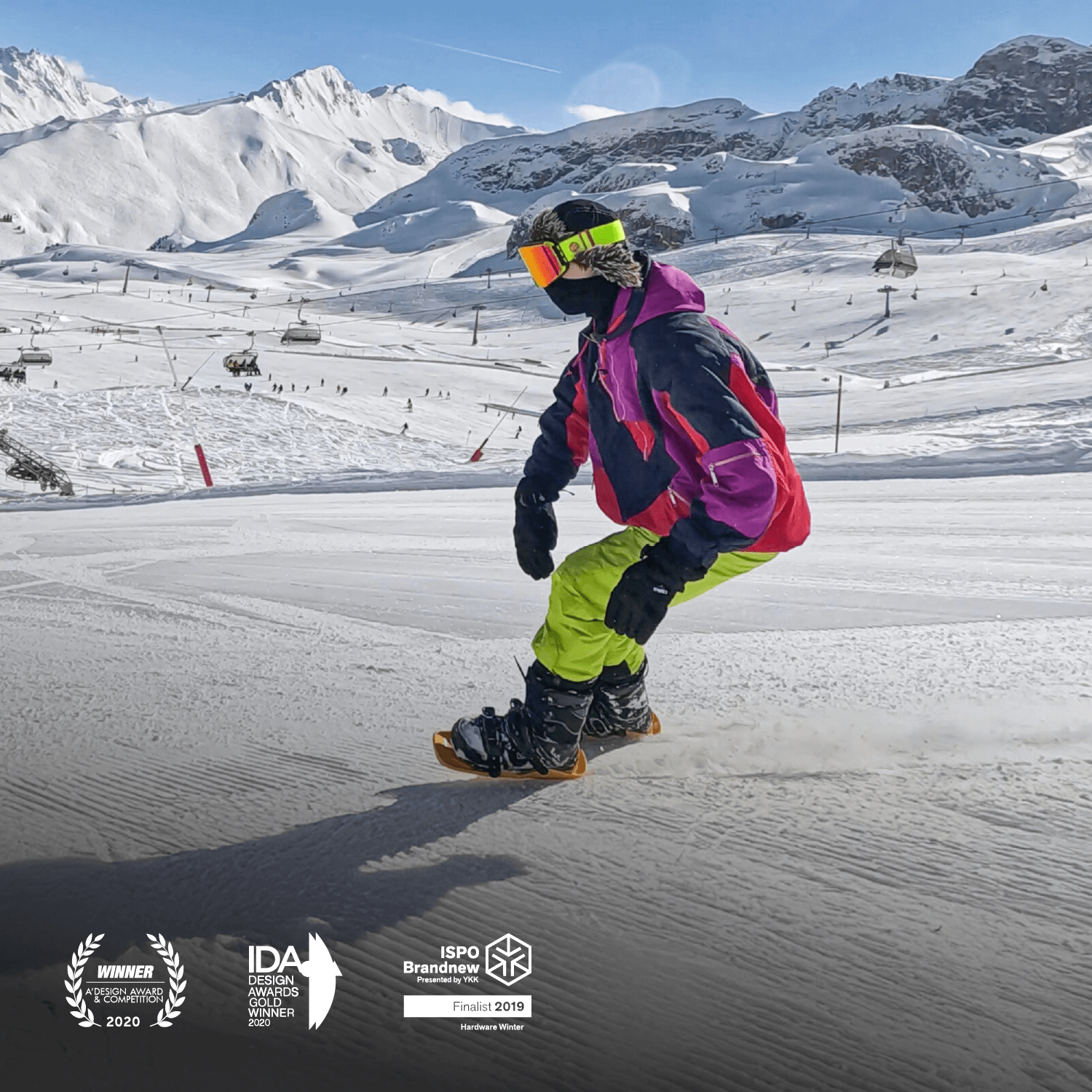




Hinterlassen Sie einen Kommentar
Diese Website ist durch hCaptcha geschützt und es gelten die allgemeinen Geschäftsbedingungen und Datenschutzbestimmungen von hCaptcha.